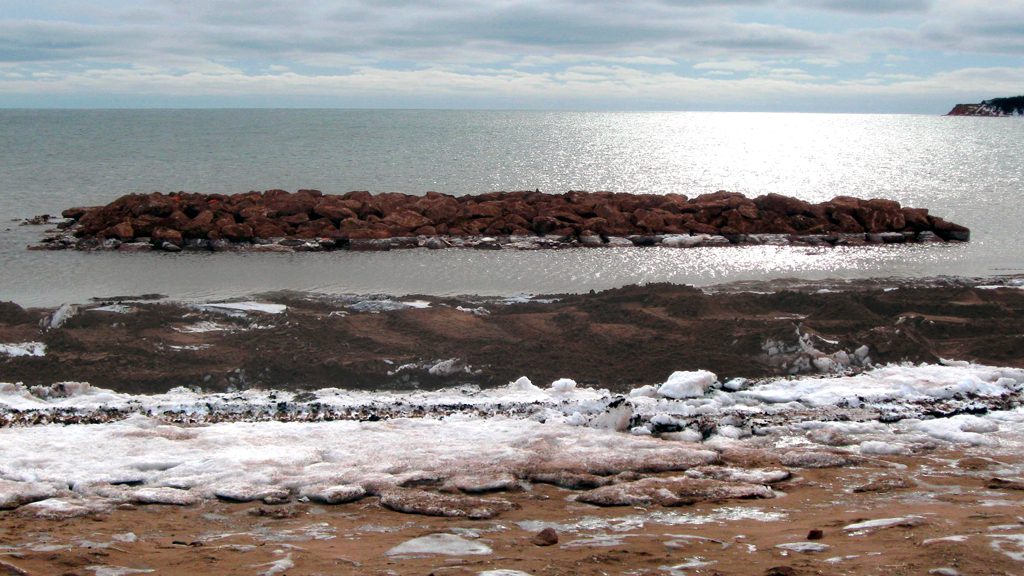Authorities hope that two engineered reefs installed 45 metres off the shore of Souris in eastern Prince Edward Island (P.E.I.) will prevent damage to the shoreline caused by surging storms resulting from climate change.
But it is not just beachgoers that might benefit. By helping to halt sand dune erosion, the reefs could, in the long run, protect homes, businesses and Route 2, the main highway into Souris.
To re-route the highway could cost “tens of millions” of dollars. The price for the intertidal reefs was $100,000, says Brian Thompson, director of the land and environment division for the province’s department of transportation, infrastructure and energy.
Thompson says if the reefs made of P.E.I.’s red coloured Island stone do their job, the government will look at more reefs around the island which loses an average of 12 inches of coastline every year.
“In some areas we lose up to a metre a year,” he says.
Breakwaters that serve to calm water are not new in P.E.I. and while the intertidal reefs also still waters, they have “a bigger purpose to maintain, nourish and build up the sand dune system.
“We’ve never done this before,” says Thompson.
Coldwater Consulting Ltd. of Ottawa designed the reefs, which consist of 2,400 tonnes of Island stone. Each reef is 30 metres long by 10 metres wide. About one metre of the 2.5-metre-high reefs is buried below the beach.
During high tide, the reefs will top the water surface by less than a metre.
The stone, from a quarry four kilometres away, is unloaded on the beach and then transported by a rubber tired loader at low tide “in the middle of the night” in up to a foot of seawater to the reef site.
A metre-deep trench is excavated and filled with foundation stones, says Thompson.
The reef has been engineered with a 2:1 slope to allow storm waves and winter ice to “ride up” the side of the reef, rather than push into it and damage the wall.
Thompson says while the weather has hampered the project this winter — snow and ice storms are examples — a benefit to winter construction is the beach is empty. In summer it is popular with locals and tourists.
The reefs are being constructed by P.E.I.’s Chapman Construction.
Thompson says detailed surveys will be conducted by a drone annually to monitor the performance of the reefs.
The objective is for the dunes to “build out” toward the reefs over time.
Coastline erosion is not new to P.E.I. but, Thompson says, there is data showing it is increasing as the size and intensity of storms over the past decade have increased because of climate change.
Although this is the first intertidal reef system created in P.E.I., Thompson says the “proven” technology has been employed around the world, including on the Great Lakes.
The reefs, which are scheduled for completion this month, depending on weather, are the last of a three-phase initiative by the province to protect the shore and Souris’s infrastructure.
In another phase “a wooden wall” was built of Hemlock boards connected to steel H-piles installed in bedrock to create a Langley Wall System, says Thompson.
Wood sand fences also were installed and dune grass was planted in select locations to build up and maintain the network of beach dunes.
He says the province’s strategy to deal with climate change is a two-pronged approach: one is to mitigate the impact by, for example, curbing greenhouse gases; the second is adaptation, with the intertidal reefs being a prime example.











Recent Comments
comments for this post are closed